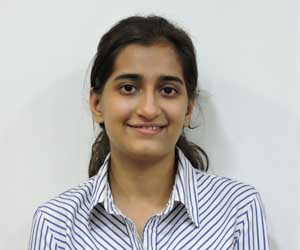Vivekananda International Foundation (VIF) held its monthly ‘Vimarsha’ lecture series on 14th October 2019, which was a panel discussion that focused on a very pertinent topic ‘Indraprastha-A Capital Journey’. The topic is highly relevant for our times as there is an absolute neglect of understanding the ancient historicity of our capital city. The eminent panel consisted of experts in the field, Dr Brij Mohan Pande, former director of Archeological Survey of India (ASI), Dr Come Carpentier de Gourdon, a French scholar on Indology, and Ms. Neera Mishra, Chairperson, the Draupadi Trust. The thrust of the discussion was that Indraprastha should be recognized as the first city of the current capital city.
The Panel discussion began with the opening remarks by Director, VIF, Dr Arvind Gupta who pointed out how Delhi has a long history and its origins lie in the ancient city of Indraprastha, which is mentioned in Mahabharata and was established by the Pandavas. Dr Gupta stated that Indraprastha has been documented in ancient texts as well as the document of the Sultanate, Mughal and British periods. The name has been mentioned in Mahabharata, the Purana, certain tantric works as well as Jain and Buddhist texts. Dr Gupta further emphasized that the journey of our capital from the days of Indraprastha was a fascinating one and that we need to sensitize and raise awareness about it.
The discussion began with Dr BM Pande quoting Sir Syed Ahmed Khan on Indraprastha. Dr Pande highlighted that Indraprastha was mentioned in several inscriptions and as to how General Alexander Cunningham referred to it. However, he stated that there was only scanty reference to Indraprastha in such texts and inscriptions. Dr Pande further stated that the main evidence of Indraprastha as a city comes from three Sanskrit inscriptions, the earliest being from a place called Machali Sheher in the district Varanasi dated to early eleventh century. He also mentioned that the other two are found in Delhi itself, one in Naraina dated to fourteenth century which refers to Indraprastha as one of the administrative centres, while the third inscription is Sarban stone inscription found in a step well which is also dated to fourteenth century. Dr Pande gave a detailed picture of the excavations done in Purana Qila and indicated the materials found from the Mauryan, Gupta, Sultanate and Mughal periods.
Thereafter, Dr Gourdon carried the discussion forward. Dr Gourdon historically traced Indraprastha from Mahabharata and mentioned how it had always been a seat of power. He mentioned Delhi’s strategic position, which was fortified to protect itself from the invaders. Dr Gourdon highlighted that history of Indraprastha was indirectly referred in different cultures, which could be found in Persia and Middle East. Dr Gourdon brought to notice that Indraprastha was also mentioned in Buddhist Jatakas and referred to as a Tiratha. He referred to Indraprastha being the imperial, cultural and sacred capital whose heritage should be observed and highlighted. Dr Gourdon ended by exemplifying the importance of the recent India-China Mamallapuram Summit in Chennai.
Ms Neera Mishra began her talk by posing a provocative question as to how many Indians know the real history and the ancient geography of the capital city. She dwelt on the neglect and misperceptions about studying the history of the capital city. Ms Mishra pointed out that neglect was due to the methodology of studying ancient India, which was imposed by the colonial rulers. She stated that Mahabharata and Ramayana were considered to be books of religion and hence disregarded as mere myths. Ms Mishra stressed that these should be studied as books of Itihasa providing information on the sacred history and geography of our country. She emphasized that Indraprastha was the capital of the Pandava state and how every ruler wanted to conquer it. She stated that Indraprastha was a meticulously planned city based on Vedic style. She pointed out that Indraprastha showcases India’s multicultural ethos, however she also added that there was an objection in popularizing the history of Indraprastha. Ms Mishra rightfully suggested better understanding and awareness of the roots of our civilization and hence the antiquity of Indraprastha which is mentioned in Mahabharata and in Greek, Persian, Mughal and British writings and needed to be popularized. In her concluding remarks, Ms Mishra suggested setting up of Indraprastha Development Board to develop Indraprastha related sites for tourism.
The Panel discussion ended with a stimulating question and answer session, further helping the audience to understand the historicity of our capital city.




Post new comment